This article was co-authored by Mark Co, DPM. Dr. Mark Co is a Podiatrist who runs his own private practice in San Francisco, California. Dr. Co specializes in treatments for bunions, ingrown toenails, toenail fungus, warts, plantar fasciitis and other causes of foot pain. He also offers custom orthotics for the treatment and prevention of foot and ankle issues. Dr. Co completed a Master of Business Administration (MBA) at New York University and an MA in Electrical Engineering and Computer Science at Johns Hopkins University. Dr. Co also completed his DPM at the California School of Podiatric Medicine and a residency and internship at the Kaiser Permanente Medical Center, Santa Clara, California. Dr. Co was awarded San Francisco's "Top 3 Podiatrists" in 2018, 2019, and 2020. Dr. Co is also a member of the CPMA (American Podiatric Medical Association).
There are 10 references cited in this article, which can be found at the bottom of the page.
wikiHow marks an article as reader-approved once it receives enough positive feedback. This article received 18 testimonials and 88% of readers who voted found it helpful, earning it our reader-approved status.
This article has been viewed 391,140 times.
Plantar fasciitis occurs when the flat ligament on the bottom of the foot that runs between the heel and the foot pad is stretched. If the plantar fascia is strained, small microtears may develop in the ligament. As a result, the ligament becomes inflamed, making it painful to put pressure on the affected foot.[1] Generally, plantar fasciitis causes heel pain that can either be minor or can actually affect your ability to walk. The good news is that only about 5 out of every 100 people end up needing surgery, while an overwhelming majority of people are able to cure the condition using simple home remedies or a physical therapy routine. Read on below to find out what you can do to ease your plantar fasciitis pain immediately and discover other treatment options if the pain does not subside.
Steps
Trying Non-Medical Remedies
-
1Give your feet a rest. One of the best things you can do for plantar fasciitis is to limit the amount of time you spend on your feet. The less pressure you exert on your heel, the more time it will have to heal. Additionally, try to avoid exercising on hard surfaces like concrete when you are experiencing pain. Opt for running on grass or an all-weather rubber track if possible.
- Running on hard surfaces can hurt your feet.
- A good guideline is to rest your foot until you feel about 90% recovered. Then, you can start gradually resuming your normal activities.[2]
-
2Perform easy stretches. Stretch your toes and calves throughout the day to prevent stiffness from occurring. By loosening up the ligaments, you can strengthen the muscles around your arch and relieve pain.Advertisement
-
3Rub ice on your heel. Doing so can help reduce inflammation and can ease the pain caused by plantar fasciitis. Better yet, place a golf ball or a full water bottle in the freezer and use it to massage the bottom of your foot once frozen. Make sure to massage the inside of your arch thoroughly to try to reduce inflammation and ease tension.
-
4Avoid using heating pads if pain increases. While some people receive relief from heating pads, heat can also cause inflammation that can make symptoms worse.[3] If you do choose to use heat to treat your symptoms, make sure to alternate between a heating pack and an ice bath or pack. Always end with an ice treatment.
-
5Try wearing night splints with you are sleeping. Night splints position the foot at a perfect 90-degree angle to the ankle and hold the toes in an upward position to stretch the arch of the foot. This prevents stiffness and cramping from occurring during the night and allows you to maintain a constant, light stretch throughout the night.
- The night splint assists in stretching your the plantar fascia and Achilles tendon while you sleep.[4]
- Night splints need to be used each night regularly. Failure to wear them nightly limit their effectiveness.
-
6Wear a walking cast on your calf. A walking cast holds your foot in place with a traditional cast for several weeks. This method is a bit more expensive and requires a substantial time commitment of inactivity. Additionally, you will likely have to undergo some level of light physical therapy after the cast is removed to restore flexibility.
- In most cases, you will only be able to use a walking cast if you're fitted for one by a podiatrist. Don't use someone else's walking cast.
Seeking Medical Treatment
-
1Take a nonsteroidal anti-inflammatory medicine. Household pain relievers like ibuprofen (Advil or Motrin), naproxen (Aleve), and aspirin can all help reduce inflammation and bring some relief to your foot. Choose either pill or cream form. If you choose to take a pill, make sure to eat something beforehand. If using a cream, simply cover the affected area and allow it to soak in.
- You can also rub a medicated balm on your feet at night, like Tiger Balm or Icy Hot.[5]
-
2Visit a physical therapist. Before turning to surgery to relieve the symptoms of your plantar fasciitis, consult a physical therapist to determine whether or not your condition can be treated with a guided stretching and rehabilitation program. A physical therapist appointment should be scheduled after exhausting all of the non-medical treatments listed above and before resorting to invasive medical procedures like surgery.
- It's likely you'll need physical therapy to correct alignment issues, particularly in your back. Plantar fasciitis can be caused when your body is not bearing weight correctly.
-
3Get corticosteroid shots. Corticosteroid shots can ease the symptoms of plantar fasciitis by temporarily relieving pain. However, these shots are not a long-term solution to curing the problem. Be aware that while much less invasive than surgery, the shots can still be painful. Over-administration of shots may also lead to damage of the heel, so listen to your doctor's recommendations.
-
4Undergo extracorporeal shock wave therapy.[6] This procedure sends sound waves to the painful area to relax the muscles in your foot. Shock wave therapy is usually prescribed for people who have not seen any results from home treatments for more than six to twelve months. Side effects include bruising, swelling, pain, and numbness. While less invasive than surgery, it has also proven less effective.[7]
-
5Resort to plantar fascia release surgery. If none of the above methods have helped relieve your symptoms over a year-long period of time, plantar fascia release surgery may be necessary to cure your symptoms. This surgical process ultimately releases tension and inflammation in the plantar fascia ligament by snipping part of the ligament itself.
- Be patient with non-surgical treatments before opting for surgery. Allow yourself at least six to 12 months of trying non-invasive treatments before choosing to go ahead with surgery.
- There are several risks associated with plantar fascia release surgery. These include: nerve entrapment or tarsal tunnel syndrome, development of a neuroma, constant heel pain and swelling, infection, long recovery time, and delayed ability to heal the wound.[8]
Preventing Plantar Fasciitis
-
1Wear shoes with good shock absorption and the right arch support for your foot. Athletic shoes or shoes with a well-cushioned sole are usually good choices.
- Choose sturdy shoes with a 1–1.5 in (2.5–3.8 cm) heel. Also, make sure the shoe doesn't twist and turn—it should only bend at the widest part of the shoe.[9]
- When you're buying shoes, try them on at the end of the day. Your feet will be most swollen, then, so your shoes will be more likely to fit comfortably all day.[10]
- You can visit a store that specializes in fitting these shoes, if you'd like.
-
2Place orthotics in your shoes. Put heel cups or full shoe orthotics in your shoes to add extra cushioning for your feet. These are particularly helpful for shoes that are uncomfortable already. Make sure that you balance out your feet by using orthotics in both shoes, regardless of whether or not you are experiencing pain in both feet. Unbalanced shoes can cause pain. Have an expert determine if you overpronate or over supinate when you walk and/or run and prescribe custom orthotics or insoles.[11]
- When you're inserting your orthotic into your shoe, be sure to push it all the way back into the heel of the shoe. Also, if you're using a full-length orthotic, take the original insole of your shoe out before you put it in. If you have a 3/4-length orthotic, however, you can put it on top of or underneath the existing insole.[12]
-
3Avoid going barefoot on hard surfaces.[13] Put on your shoes before walking around at all, even around your house, if you don't have carpet. Purchase comfortable house shoes with good support to wear as slippers. This is where you can really nurture your feet with supportive shoes. Since you're only wearing them around the house, it doesn't matter what they look like!
- You may enjoy giving your feet a rest from shoes if your home is full of soft carpets.
-
4Maintain a healthy weight. In some cases, extra weight can cause additional pressure on your foot, causing or worsening plantar fasciitis. If you believe this is the case, eat a healthy, balanced diet to start losing weight. Talk to your doctor about a good exercise plan for you that won't aggravate your plantar fasciitis.[14]
- Plantar fasciitis is caused by tightness in your calves, so be sure to stretch your calf muscles before and after you exercise.[15]
- For example, you might build your meals around lean proteins and vegetables. You could also do yoga, go on slow walks, or start swimming.
- Talk to your doctor or dietitian about a healthy, ideal weight for your height and age. You can also use your BMI as a guide.
-
5Get help for flat feet or high arches. Both of these conditions can cause plantar fasciitis. You can wear different footwear or use inserts to reduce the pressure on your feet. Your doctor or podiatrist can advise you on what will work best for you.[16]
- You can buy special shoes or inserts from specialty stores or online. You may also be able to get them through your doctor's office.
Sample Stretches
Expert Q&A
Did you know you can get expert answers for this article?
Unlock expert answers by supporting wikiHow
-
QuestionCan I go for a hike with plantar fasciitis? It started last night.
 Jurdy Dugdale, RNJurdy Dugdale is a Registered Nurse in Florida. She received her Nursing License from the Florida Board of Nursing in 1989.
Jurdy Dugdale, RNJurdy Dugdale is a Registered Nurse in Florida. She received her Nursing License from the Florida Board of Nursing in 1989.
Medical Review Board
-
QuestionHow do you know what you should weigh?
 Jurdy Dugdale, RNJurdy Dugdale is a Registered Nurse in Florida. She received her Nursing License from the Florida Board of Nursing in 1989.
Jurdy Dugdale, RNJurdy Dugdale is a Registered Nurse in Florida. She received her Nursing License from the Florida Board of Nursing in 1989.
Medical Review Board
-
QuestionHow long should I rest so my plantar fasciitis goes away?
 Mark Co, DPMDr. Mark Co is a Podiatrist who runs his own private practice in San Francisco, California. Dr. Co specializes in treatments for bunions, ingrown toenails, toenail fungus, warts, plantar fasciitis and other causes of foot pain. He also offers custom orthotics for the treatment and prevention of foot and ankle issues. Dr. Co completed a Master of Business Administration (MBA) at New York University and an MA in Electrical Engineering and Computer Science at Johns Hopkins University. Dr. Co also completed his DPM at the California School of Podiatric Medicine and a residency and internship at the Kaiser Permanente Medical Center, Santa Clara, California. Dr. Co was awarded San Francisco's "Top 3 Podiatrists" in 2018, 2019, and 2020. Dr. Co is also a member of the CPMA (American Podiatric Medical Association).
Mark Co, DPMDr. Mark Co is a Podiatrist who runs his own private practice in San Francisco, California. Dr. Co specializes in treatments for bunions, ingrown toenails, toenail fungus, warts, plantar fasciitis and other causes of foot pain. He also offers custom orthotics for the treatment and prevention of foot and ankle issues. Dr. Co completed a Master of Business Administration (MBA) at New York University and an MA in Electrical Engineering and Computer Science at Johns Hopkins University. Dr. Co also completed his DPM at the California School of Podiatric Medicine and a residency and internship at the Kaiser Permanente Medical Center, Santa Clara, California. Dr. Co was awarded San Francisco's "Top 3 Podiatrists" in 2018, 2019, and 2020. Dr. Co is also a member of the CPMA (American Podiatric Medical Association).
Podiatrist People heal in different time frames, so the exact time will vary. However, I tell my patients that once they're about 90% better, they can begin gradually resuming their normal activities. For instance, the first day, you might do about 25% of your normal intensity or duration, then move to 50% the next day, and 75% the next day, as long as it doesn't aggravate the injury.
People heal in different time frames, so the exact time will vary. However, I tell my patients that once they're about 90% better, they can begin gradually resuming their normal activities. For instance, the first day, you might do about 25% of your normal intensity or duration, then move to 50% the next day, and 75% the next day, as long as it doesn't aggravate the injury.
Warnings
- It's important you deal with your plantar fasciitis, as it can become worse over time. It may also alter your gait, which can cause you to develop back, hip, and knee pain, as well.⧼thumbs_response⧽
References
- ↑ Miguel Cunha, DPM. Board Certified Podiatrist. Expert Interview. 1 May 2020.
- ↑ Mark Co, DPM. Podiatrist. Expert Interview. 21 April 2020.
- ↑ https://www.uofmhealth.org/health-library/hw114458#hw114566
- ↑ Miguel Cunha, DPM. Board Certified Podiatrist. Expert Interview. 1 May 2020.
- ↑ Miguel Cunha, DPM. Board Certified Podiatrist. Expert Interview. 1 May 2020.
- ↑ https://www.ncbi.nlm.nih.gov/pmc/articles/PMC5403108/
- ↑ http://www.mayoclinic.com/health/plantar-fasciitis/DS00508/DSECTION=treatments-and-drugs
- ↑ http://www.webmd.com/a-to-z-guides/should-i-have-surgery-for-plantar-fasciitis#av2315
- ↑ Mark Co, DPM. Podiatrist. Expert Interview. 21 April 2020.
- ↑ Miguel Cunha, DPM. Board Certified Podiatrist. Expert Interview. 1 May 2020.
- ↑ http://www.sportsinjuryclinic.net/sport-injuries/foot-heel-pain/plantar-fasciitis
- ↑ Mark Co, DPM. Podiatrist. Expert Interview. 21 April 2020.
- ↑ https://www.nhs.uk/conditions/plantar-fasciitis/
- ↑ http://www.webmd.com/a-to-z-guides/plantar-fasciitis-treatment-overview?page=1
- ↑ Mark Co, DPM. Podiatrist. Expert Interview. 21 April 2020.
- ↑ http://www.aofas.org/footcaremd/conditions/ailments-of-the-heel/pages/plantar-fasciitis.aspx
About This Article
To treat plantar fasciitis, limit the amount of time you spend on your feet, and stretch your toes and calves throughout the day to prevent stiffness from occurring. Use an ice pack or a frozen water bottle on the heel of your foot to help ease the pain and swelling associated with plantar fasciitis. If you have a lot of pain after sleeping at night, try wearing night splints, which hold your foot at a 90° angle and prevents stiffness and cramping. Keep reading to learn how physical therapy may help with plantar fasciitis!

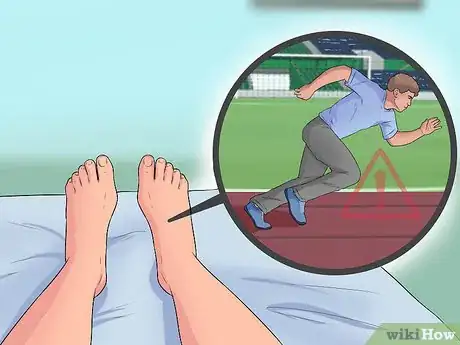

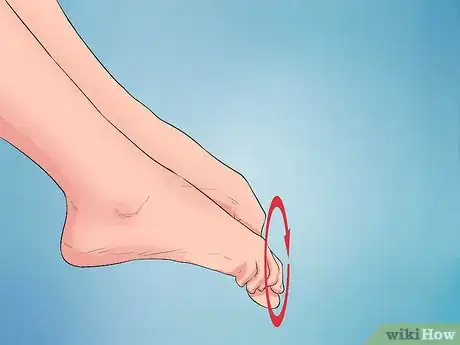
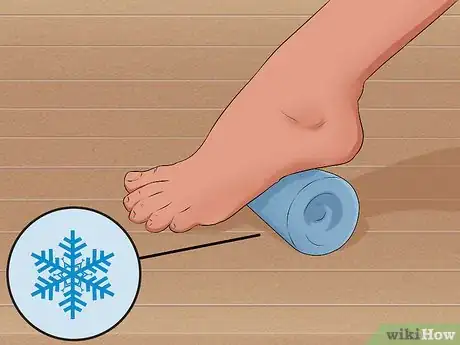
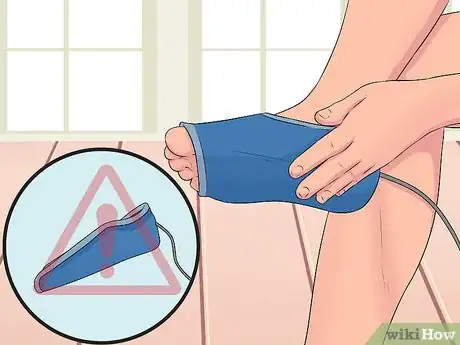
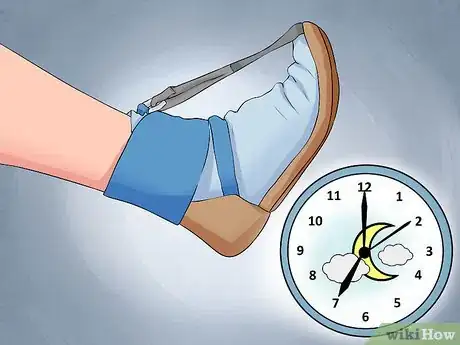
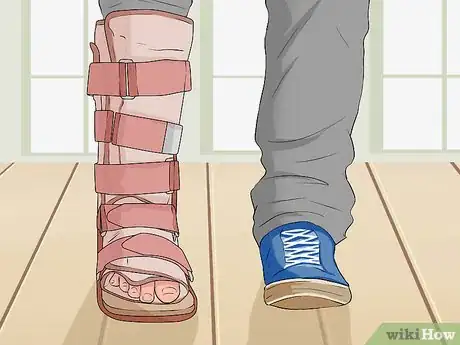
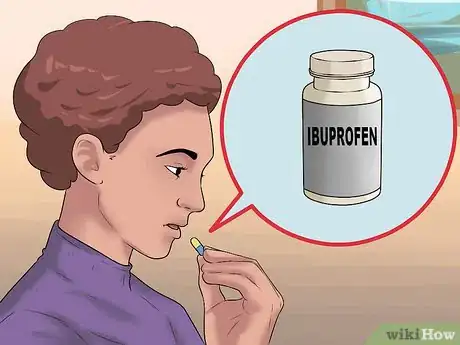

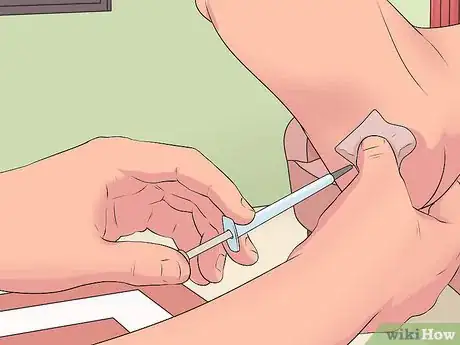
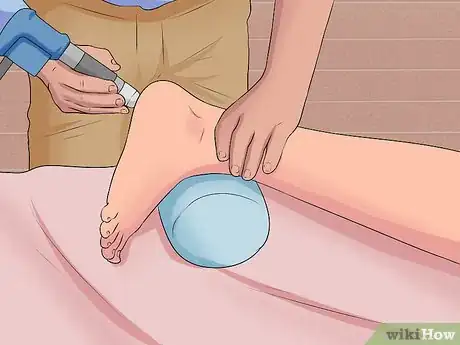
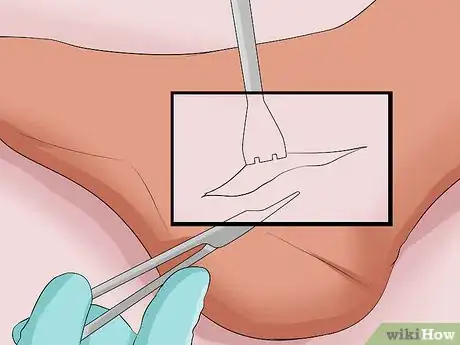
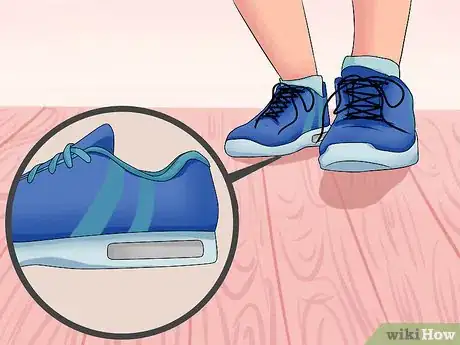
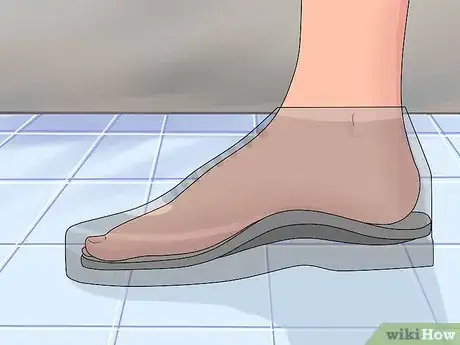
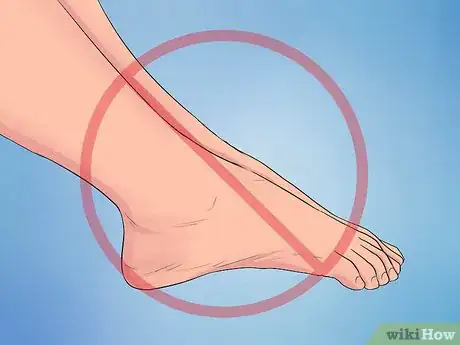


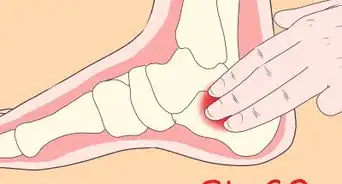
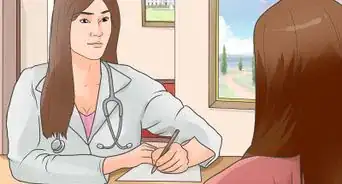



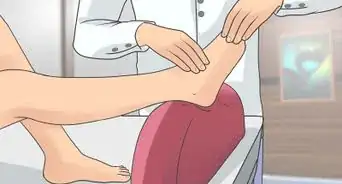

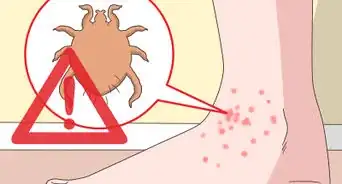




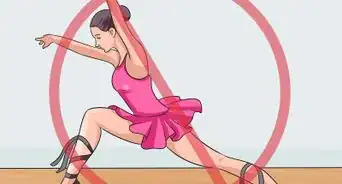










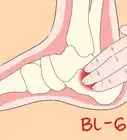






































Medical Disclaimer
The content of this article is not intended to be a substitute for professional medical advice, examination, diagnosis, or treatment. You should always contact your doctor or other qualified healthcare professional before starting, changing, or stopping any kind of health treatment.
Read More...